Philipp Klumpp
Speaker- and Text-Independent Estimation of Articulatory Movements and Phoneme Alignments from Speech
Jul 03, 2024Abstract:This paper introduces a novel combination of two tasks, previously treated separately: acoustic-to-articulatory speech inversion (AAI) and phoneme-to-articulatory (PTA) motion estimation. We refer to this joint task as acoustic phoneme-to-articulatory speech inversion (APTAI) and explore two different approaches, both working speaker- and text-independently during inference. We use a multi-task learning setup, with the end-to-end goal of taking raw speech as input and estimating the corresponding articulatory movements, phoneme sequence, and phoneme alignment. While both proposed approaches share these same requirements, they differ in their way of achieving phoneme-related predictions: one is based on frame classification, the other on a two-staged training procedure and forced alignment. We reach competitive performance of 0.73 mean correlation for the AAI task and achieve up to approximately 87% frame overlap compared to a state-of-the-art text-dependent phoneme force aligner.
Synthetic Cross-accent Data Augmentation for Automatic Speech Recognition
Mar 01, 2023Abstract:The awareness for biased ASR datasets or models has increased notably in recent years. Even for English, despite a vast amount of available training data, systems perform worse for non-native speakers. In this work, we improve an accent-conversion model (ACM) which transforms native US-English speech into accented pronunciation. We include phonetic knowledge in the ACM training to provide accurate feedback about how well certain pronunciation patterns were recovered in the synthesized waveform. Furthermore, we investigate the feasibility of learned accent representations instead of static embeddings. Generated data was then used to train two state-of-the-art ASR systems. We evaluated our approach on native and non-native English datasets and found that synthetically accented data helped the ASR to better understand speech from seen accents. This observation did not translate to unseen accents, and it was not observed for a model that had been pre-trained exclusively with native speech.
Disentangled Latent Speech Representation for Automatic Pathological Intelligibility Assessment
Apr 08, 2022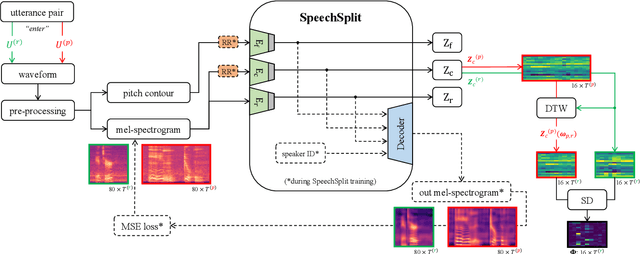
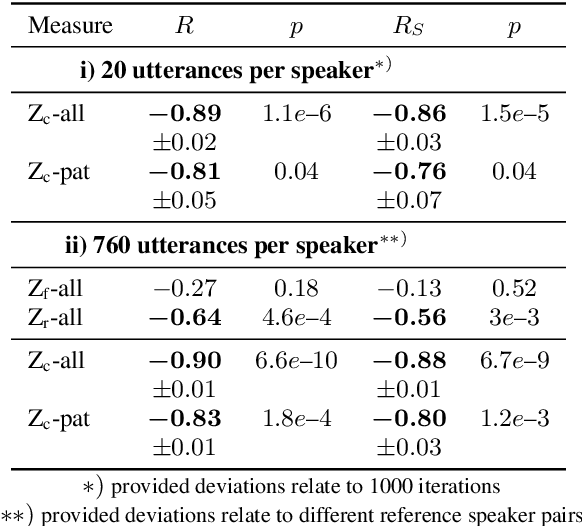
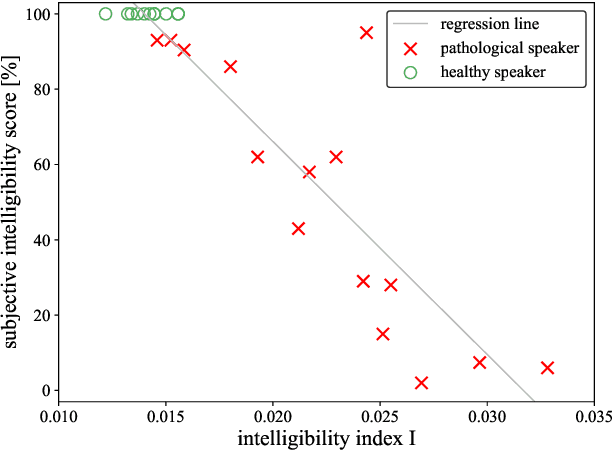
Abstract:Speech intelligibility assessment plays an important role in the therapy of patients suffering from pathological speech disorders. Automatic and objective measures are desirable to assist therapists in their traditionally subjective and labor-intensive assessments. In this work, we investigate a novel approach for obtaining such a measure using the divergence in disentangled latent speech representations of a parallel utterance pair, obtained from a healthy reference and a pathological speaker. Experiments on an English database of Cerebral Palsy patients, using all available utterances per speaker, show high and significant correlation values (R = -0.9) with subjective intelligibility measures, while having only minimal deviation (+-0.01) across four different reference speaker pairs. We also demonstrate the robustness of the proposed method (R = -0.89 deviating +-0.02 over 1000 iterations) by considering a significantly smaller amount of utterances per speaker. Our results are among the first to show that disentangled speech representations can be used for automatic pathological speech intelligibility assessment, resulting in a reference speaker pair invariant method, applicable in scenarios with only few utterances available.
Common Phone: A Multilingual Dataset for Robust Acoustic Modelling
Jan 31, 2022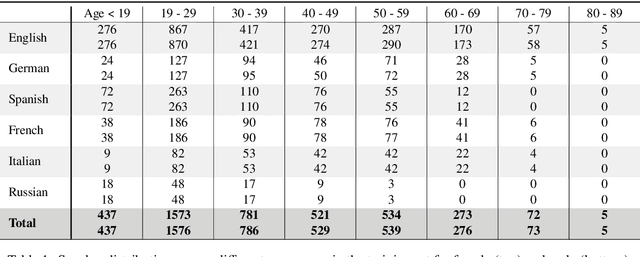

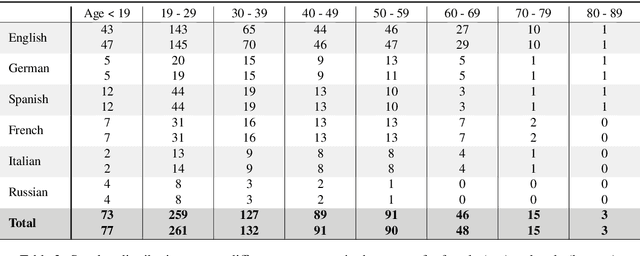
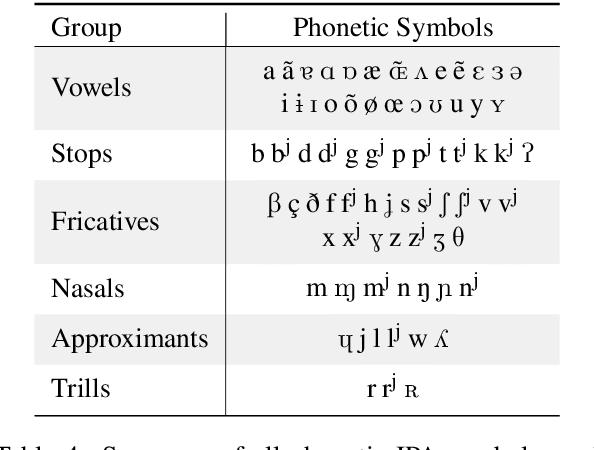
Abstract:Current state of the art acoustic models can easily comprise more than 100 million parameters. This growing complexity demands larger training datasets to maintain a decent generalization of the final decision function. An ideal dataset is not necessarily large in size, but large with respect to the amount of unique speakers, utilized hardware and varying recording conditions. This enables a machine learning model to explore as much of the domain-specific input space as possible during parameter estimation. This work introduces Common Phone, a gender-balanced, multilingual corpus recorded from more than 11.000 contributors via Mozilla's Common Voice project. It comprises around 116 hours of speech enriched with automatically generated phonetic segmentation. A Wav2Vec 2.0 acoustic model was trained with the Common Phone to perform phonetic symbol recognition and validate the quality of the generated phonetic annotation. The architecture achieved a PER of 18.1 % on the entire test set, computed with all 101 unique phonetic symbols, showing slight differences between the individual languages. We conclude that Common Phone provides sufficient variability and reliable phonetic annotation to help bridging the gap between research and application of acoustic models.
The Phonetic Footprint of Parkinson's Disease
Dec 21, 2021
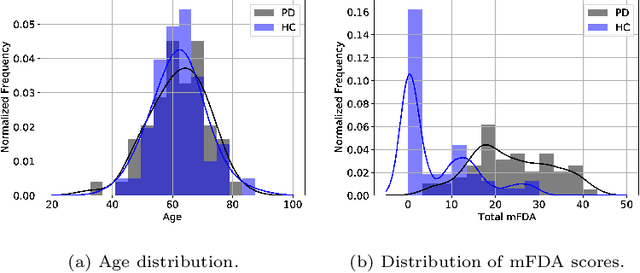
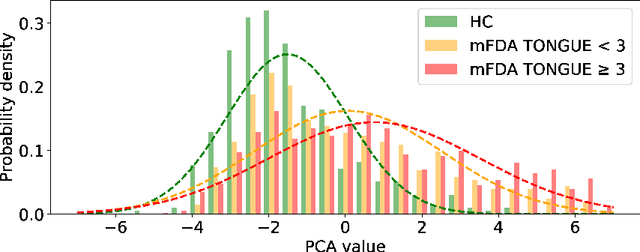
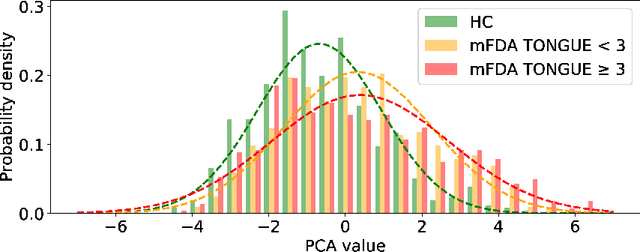
Abstract:As one of the most prevalent neurodegenerative disorders, Parkinson's disease (PD) has a significant impact on the fine motor skills of patients. The complex interplay of different articulators during speech production and realization of required muscle tension become increasingly difficult, thus leading to a dysarthric speech. Characteristic patterns such as vowel instability, slurred pronunciation and slow speech can often be observed in the affected individuals and were analyzed in previous studies to determine the presence and progression of PD. In this work, we used a phonetic recognizer trained exclusively on healthy speech data to investigate how PD affected the phonetic footprint of patients. We rediscovered numerous patterns that had been described in previous contributions although our system had never seen any pathological speech previously. Furthermore, we could show that intermediate activations from the neural network could serve as feature vectors encoding information related to the disease state of individuals. We were also able to directly correlate the expert-rated intelligibility of a speaker with the mean confidence of phonetic predictions. Our results support the assumption that pathological data is not necessarily required to train systems that are capable of analyzing PD speech.
* https://www.sciencedirect.com/science/article/abs/pii/S0885230821001169
 Add to Chrome
Add to Chrome Add to Firefox
Add to Firefox Add to Edge
Add to Edge